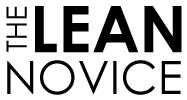The Real Situation
In Toyota philosophy it is very important to know the facts when making improvements and analysing a situation. This is expressed through the go-and-see philosophy.
Genjitsu:
Japanese for “Reality” used to refer to “the real situation”. Part of the go-and-see philosophy used by Toyota.



 Since I had learned that Lean was originally from Toyota, it seemed that Jeffrey Likers The Toyota Way was a good place to start. The short of it is that I was hooked immediately. The next book was Lean Thinking by Jim Womack. Again, it really opened my eyes to a whole new world. At this point I didn’t really know who any of the famous Lean-thinkers where but as it happens I had picked a good starting point.
Since I had learned that Lean was originally from Toyota, it seemed that Jeffrey Likers The Toyota Way was a good place to start. The short of it is that I was hooked immediately. The next book was Lean Thinking by Jim Womack. Again, it really opened my eyes to a whole new world. At this point I didn’t really know who any of the famous Lean-thinkers where but as it happens I had picked a good starting point.